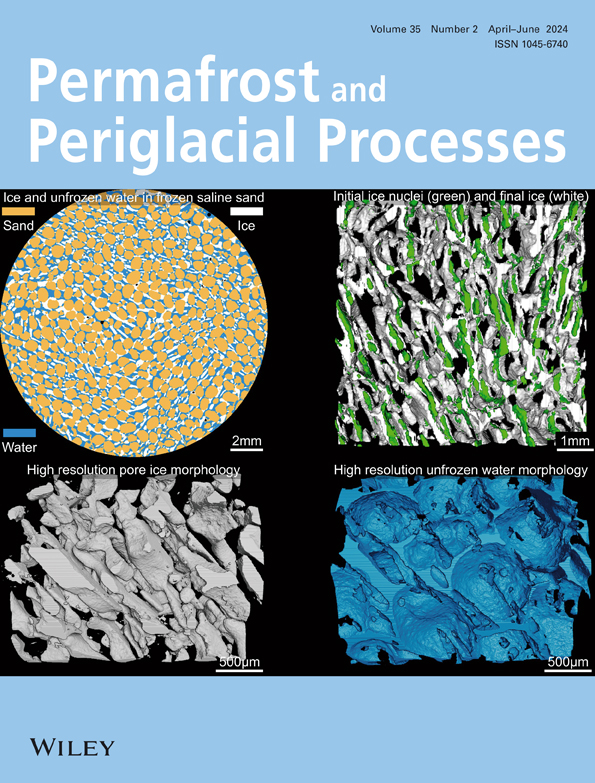Sensitivity of simulated frozen ground temperatures to different solar radiation and air temperature products—a case study in the Qilian Mountains in West China
IF 3.3
3区 地球科学
Q2 GEOGRAPHY, PHYSICAL
引用次数: 0
Abstract
Downward solar radiation (DSR) and air temperature (Ta) have significant influences on the thermal state of frozen ground. These parameters are also important forcing terms for physically based land surface models (LSMs). However, the quantitative influences of inaccuracies in DSR and Ta products on simulated frozen ground temperatures remain unclear. In this study, three DSR products (CMFD‐SR, Tang‐SR, and GLDAS‐SR) and two Ta products (CMFD‐Ta and GLDAS‐Ta) were used to force an LSM model in an alpine watershed in Northwest China, to investigate the sensitivity of simulated ground temperatures to different DSR and Ta products. Compared to a control model (CTRL) forced by in situ observed DSR, ground temperatures simulated by the experimental model forced by GLDAS‐SR are obviously decreased because GLDAS‐SR is much lower than in situ observations. Instead, simulation results in models forced by CMFD‐SR and Tang‐SR are much closer to those of CTRL. Ta products led to significant errors in simulated ground temperatures. In conclusion, both CMFD‐SR and Tang‐SR could be used as good alternatives to in situ observed DSR for forcing a model, with acceptable errors in simulation results. However, more care need to be paid for models forced by Ta products instead of Ta observations, and conclusions should be carefully drawn.模拟冻土温度对不同太阳辐射和气温产物的敏感性——以中国西部祁连山为例
本文章由计算机程序翻译,如有差异,请以英文原文为准。
求助全文
约1分钟内获得全文
求助全文
来源期刊
CiteScore
9.70
自引率
8.00%
发文量
43
审稿时长
>12 weeks
期刊介绍:
Permafrost and Periglacial Processes is an international journal dedicated to the rapid publication of scientific and technical papers concerned with earth surface cryogenic processes, landforms and sediments present in a variety of (Sub) Arctic, Antarctic and High Mountain environments. It provides an efficient vehicle of communication amongst those with an interest in the cold, non-glacial geosciences. The focus is on (1) original research based on geomorphological, hydrological, sedimentological, geotechnical and engineering aspects of these areas and (2) original research carried out upon relict features where the objective has been to reconstruct the nature of the processes and/or palaeoenvironments which gave rise to these features, as opposed to purely stratigraphical considerations. The journal also publishes short communications, reviews, discussions and book reviews. The high scientific standard, interdisciplinary character and worldwide representation of PPP are maintained by regional editorial support and a rigorous refereeing system.

 求助内容:
求助内容: 应助结果提醒方式:
应助结果提醒方式:


